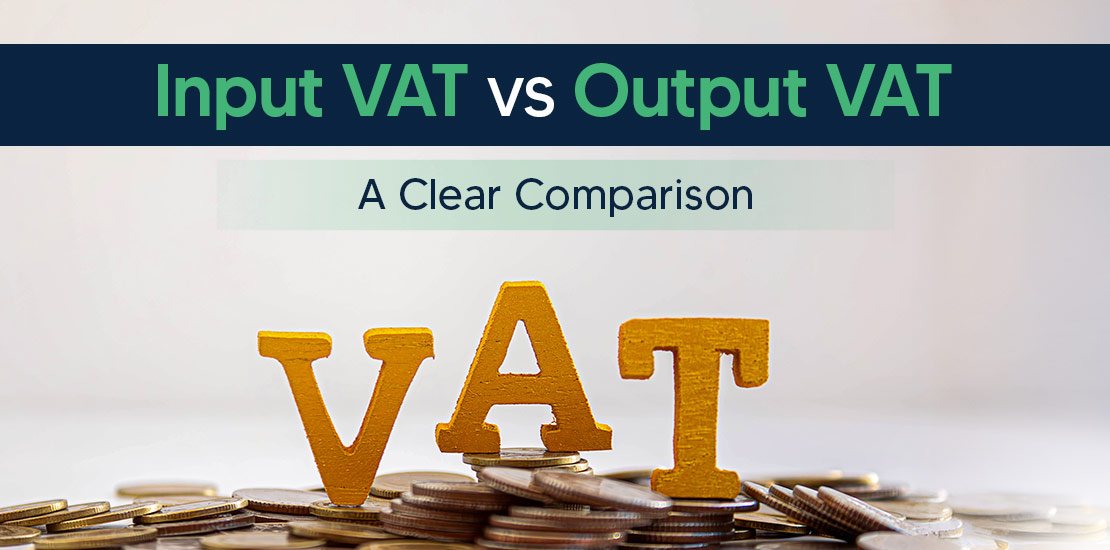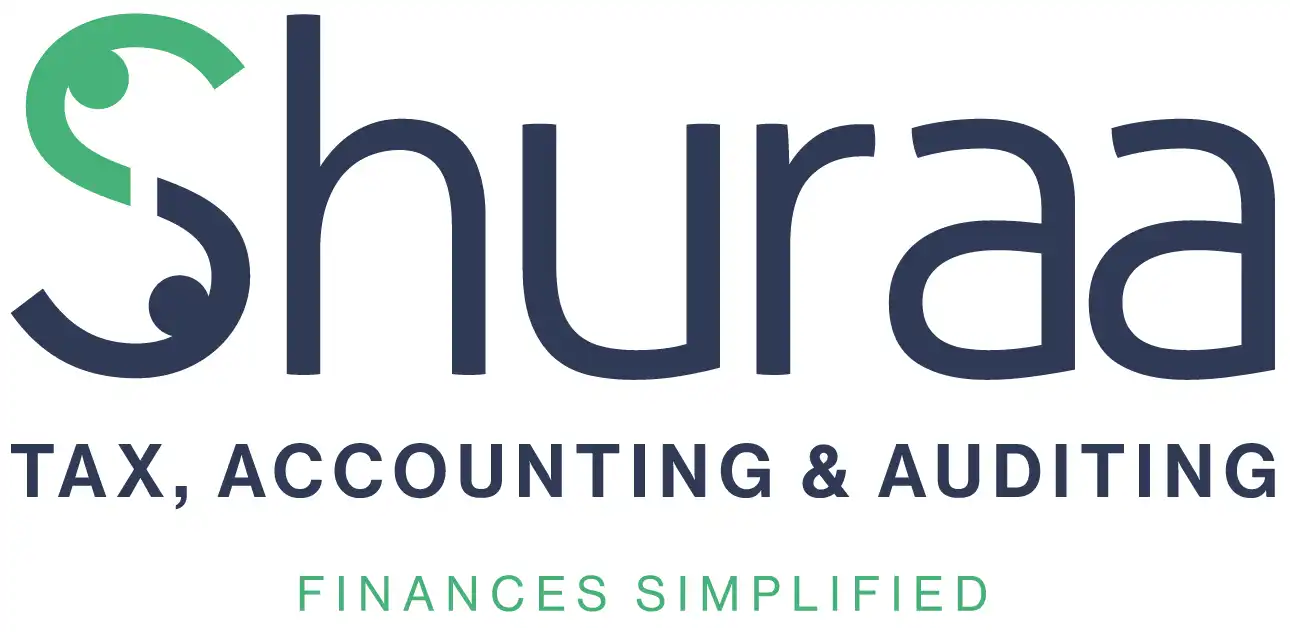Table of Contents
- What is a VAT Return in the UAE?
- Who Needs to File VAT Returns in the UAE?
- Important VAT Return Filing Dates in the UAE
- Monthly VAT Filing (Turnover above AED 150 million)
- What You Need to File the VAT 201 Return Form in the UAE
- Pre-requisites for Filing VAT Returns in the UAE
- How To File VAT Return in UAE?
- VAT Returns in UAE Contents
- VAT on Expenses and all other Inputs
- Net VAT Due
- Additional Reporting Requirements
- How to Correct Errors in VAT Returns in the UAE
- Situations Where Corrections Are Necessary
- How Shuraa Tax Can Help
VAT return filing in Dubai or UAE is an essential obligation for businesses operating in the United Arab Emirates (UAE). As a progressive and modern country, the UAE has implemented a tax system that aligns with international standards. Therefore, the UAE introduced its tax system to diversify its revenue streams and support its economic growth.
If your business is registered for VAT with the Federal Tax Authority (FTA), you need to file VAT returns regularly. This means reporting the VAT you’ve collected from your sales and the VAT you’ve paid on your purchases. Knowing how to file VAT in the UAE correctly is essential for staying compliant with the tax regulations.
Currently, the authorities have set the VAT registration threshold at AED 375,000 per annum. Failure to file tax returns or comply with the country’s tax laws may result in penalties and fines. That’s why understanding the VAT filing process is crucial for businesses in the UAE.
What is a VAT Return in the UAE?
A VAT return in the UAE is a report that businesses submit to the government to show the amount of Value Added Tax (VAT) collected from customers and the amount of VAT paid to suppliers during a specific period.
Think of it like this:
- When a business sells something, it adds VAT and collects that money from customers — this is called output VAT.
- When the same business buys goods or services for its operations, it also pays VAT — this is called input VAT.
At the end of every tax period (usually every 3 months or sometimes every month), businesses must send a VAT return to the Federal Tax Authority (FTA) using the EMARATAX online system.
The VAT return helps the FTA know:
- How much VAT the business collected (from sales)
- How much VAT the business paid (on purchases)
- Whether the business needs to pay the difference or can get a refund
The official form used for this in the UAE is called VAT 201. It includes:
- VAT on Sales – Total VAT collected from customers
- VAT on Purchases – Total VAT paid to suppliers
- Net VAT – The difference between what was collected and what was paid
Example:
If a company collects AED 10,000 in VAT from customers but pays AED 7,000 in VAT on purchases, it needs to pay AED 3,000 to the FTA.
If it paid more VAT than it collected, it might get a refund or use the extra amount in the next return.
Filing VAT returns on time is essential — it’s not just a legal requirement, but also helps businesses stay transparent and avoid fines.
Who Needs to File VAT Returns in the UAE?
Any business or individual registered for VAT in the UAE is required to file VAT returns. This includes:
- Businesses with an annual turnover exceeding the mandatory VAT registration threshold of AED 375,000.
- Voluntarily registered businesses with a turnover above AED 187,500.
Frequency of Filing VAT Returns
- Quarterly: Most businesses file VAT returns every quarter, covering three months of transactions.
- Monthly: Larger businesses with a high turnover may need to file VAT returns monthly.
Important VAT Return Filing Dates in the UAE
If your business is registered for VAT in the UAE, you need to file VAT returns on time to avoid penalties. The Federal Tax Authority (FTA) gives each business a tax period – this is either every month or every three months (quarterly), depending on your business’s annual earnings.
Quarterly VAT Filing (Turnover below AED 150 million)
If your business makes less than AED 150 million per year, you’ll likely file VAT returns every quarter. Here’s when your returns are due:
- Q1 (Jan – Mar): File by 28th April 2024
- Q2 (Apr – Jun): File by 28th July 2024
- Q3 (Jul – Sep): File by 28th October 2024
- Q4 (Oct – Dec): File by 28th January 2025
Monthly VAT Filing (Turnover above AED 150 million)
If your business earns more than AED 150 million per year, you need to file VAT every month. The deadline is the 28th of the following month.
For example:
- The return for May 2024 must be filed by 28th June 2024.
Important Note:
The FTA may assign a different tax period to some businesses depending on their situation. So it’s always a good idea to double-check your business’s assigned tax period in your FTA account.
What You Need to File the VAT 201 Return Form in the UAE
If your business is registered for VAT, you must submit your VAT 201 return online through the FTA portal. The process is manual – you’ll need to enter all figures related to your business’s purchases, sales, and VAT amounts.
The VAT 201 form is divided into seven key sections. Here’s a breakdown of what each section includes:
1. Taxpayer Details
Basic information like your TRN (Tax Registration Number), business name, and contact info.
2. VAT Return Period
This includes the start and end dates of the tax period you’re filing for (monthly or quarterly), plus the filing due date.
3. VAT on Sales and Other Outputs
Here, you report:
- VAT is collected on your sales and services
- Details of standard-rated, zero-rated, and exempt supplies
- Sales within the UAE and exports
4. VAT on Expenses and Other Inputs
This section is for:
- VAT you’ve paid on business purchases
- Recoverable input VAT (e.g., on rent, supplies, etc.)
5. Net VAT Due
This is the calculation part:
- If Output VAT > Input VAT, you need to pay the difference
- If Input VAT > Output VAT, you may be eligible for a refund or carry it forward.
6. Additional Reporting Requirements
You’ll provide extra details if needed — for example, reverse charge transactions, import VAT, or any adjustments.
7. Declaration and Authorised Signatory
The final section is where you confirm all information is correct and provide the name and details of the person submitting the form.
Note: Keep all invoices, receipts, and supporting documents ready while filling out the form. It helps ensure accuracy and avoids issues during audits.
Pre-requisites for Filing VAT Returns in the UAE
Before you can file your VAT returns in the UAE, there are a few essential steps to ensure you’re ready. Here’s what you need:
1. VAT Registration with the Federal Tax Authority (FTA)
To file VAT returns, your business must first be registered for VAT with the FTA. This involves obtaining a Tax Registration Number (TRN), which serves as your business’s unique VAT identification. Without this, you cannot file VAT returns or fulfil your tax obligations.
2. Accurate Record-Keeping
Maintaining accurate and up-to-date records of your business transactions is essential. These include:
- Sales Records: Details of taxable and exempt sales.
- Purchase Records: Invoices for expenses that include input VAT.
- Expense Records: Any additional costs related to your business operations.
These records are the foundation for calculating VAT owed or refundable and must be retained for at least five years for audit purposes.
3. Access to the FTA e-Services Portal
The FTA e-Services portal is the official platform for submitting VAT returns in the UAE. To use it, you’ll need:
- A registered account on the portal.
- Your Tax Registration Number (TRN) and login credentials.
How To File VAT Return in UAE?
VAT return filing in Dubai or UAE is a straightforward process when you follow these steps:
Step 1: Log in to the FTA e-Services Portal
Visit the official FTA e-Services portal. Enter your Tax Registration Number (TRN) and password to access your account.
Step 2: Navigate to the VAT Returns Section
Once logged in, go to the “VAT Returns” section on the dashboard. Select the VAT return form (VAT 201) for the relevant tax period.
Step 3: Fill in the VAT Return Form
The VAT return form is divided into sections where you need to provide the following information:
Taxable Sales and Output Tax:
- Enter the total value of your taxable supplies (sales) and the VAT collected from customers.
- Provide details for standard-rated supplies within the UAE and exports.
Purchases and Input Tax:
- Enter the total value of your taxable purchases and the VAT paid on them.
- Ensure this includes expenses eligible for VAT recovery.
Net VAT Amount:
The system will calculate the difference between output tax and input tax to determine the VAT payable or refundable.
Step 4: Review the Form
Double-check all the details for accuracy. Ensure there are no discrepancies between your records and the information entered.
Step 5: Submit the VAT Return
Click on “Submit” to file your VAT return. Once submitted, you will receive a confirmation message from the FTA.
Step 6: Make the Payment (If Applicable)
If your VAT return shows a payable amount, proceed to make the payment through the FTA portal. Payment can be made via:
- E-Dirham or credit card.
- Bank transfer using the provided GIBAN (Generated International Bank Account Number).
Step 7: Retain a Copy for Records
Save a copy of the filed VAT return and payment receipt for your records. These may be required during audits or for future reference.
File your VAT return before the deadline to avoid penalties. If you notice errors after submission, you can correct them by filing a Voluntary Disclosure through the FTA portal.
VAT Returns in UAE Contents
The following two sections are in a VAT return in the UAE: –
The first section is the central section, which includes the taxpayer’s details, sales, purchases, and net VAT due. Moreover, the central section is mandatory for all VAT-registered businesses in the UAE.
The second section is the additional reporting requirements section, which only applies to certain businesses under specific conditions. Furthermore, this section includes fields related to the profit margin scheme.
Main
When you file VAT returns in the UAE, the central section contains all the necessary details pre-populated with the taxpayer’s data, including the tax year-end VAT stagger, tax form filing type, and submission date. In a UAE VAT return, the section that captures the taxpayer’s information is called Taxable Person Details.
This section includes the Tax Registration Number (TRN), the name of the business in both English and Arabic, and the registered address or place of residence of the company.
VAT on Sales and all other Outputs
The VAT on Sales and all other Outputs section of the VAT return should contain details of all sales and supplies made by the taxpayer during the tax period.
- The first column is for the total sales transaction amount which includes sum of sales value due to debit or credit notes. The second value is the VAT amount that has been collected, which also consists of any changes to the VAT collected due to changes in the taxable value captured in the previous column.
- Finally, the third value shows any adjustments made to output tax or VAT collected during the earlier tax period.
VAT on Expenses and all other Inputs
This series of sections presents information on all VAT on purchases and expenses made during the tax period.
- The total taxable business purchase amount is based on purchase invoices, which include any adjustments due to debit or credit notes from suppliers or corrections from previous tax periods.
- The Recoverable VAT Amount, or the number of VAT refunds that can be claimed according to VAT law.
- Any adjustments made to the input tax (VAT paid on purchases).
Net VAT Due
Calculating the net VAT due is crucial in determining the amount of VAT a taxpayer owes to the government. To calculate the net VAT due, the total recoverable VAT is subtracted from the total output VAT payable. Furthermore, if the output VAT payable is higher than the recoverable VAT, the difference is the net VAT due, and you will need to make a payment to the government.
The government may refund or carry forward a VAT credit to future VAT periods if their recoverable VAT is higher than the output VAT payable. This section helps to ensure that businesses accurately report and pay their VAT obligations in accordance with the law.
Additional Reporting Requirements
To comply with tax regulations, businesses that sell secondhand goods and have enrolled in the profit margin scheme must complete this section. They need to select “yes” to indicate their enrollment under the scheme, which applies VAT only to the profit made during sales of secondhand products.
How to Correct Errors in VAT Returns in the UAE
Mistakes in VAT returns can happen, but it’s important to correct them promptly to avoid penalties and stay compliant with the UAE tax system. The Federal Tax Authority (FTA) allows businesses to correct errors through a process called Voluntary Disclosure. Here’s how you can do it:
1. Log in to the FTA e-Services Portal
Use your Tax Registration Number (TRN) and password to log in to your account. Once logged in, go to the “VAT” section and select the “Voluntary Disclosure” option.
2. Select the Relevant VAT Return
Choose the VAT return period where the error occurred.
3. Explain the Error
Clearly describe the mistake, including the nature of the error (whether it’s related to sales, purchases, input tax, output tax, etc.). Specify the correct figures and how the error occurred.
4. Submit the Voluntary Disclosure
Review the information and submit the disclosure. The FTA will assess the correction and may require additional documentation or clarification.
5. Pay Any Additional VAT
If the correction results in more VAT being owed, ensure that the payment is made promptly to avoid further penalties.
Situations Where Corrections Are Necessary
You must file a voluntary disclosure if any of the following situations occur:
- Incorrect Calculation of VAT Payable or Refundable (e.g., input tax claimed incorrectly, or sales figures misreported)
- Omissions or Underreporting of Taxable Transactions
- Incorrect VAT Classification (e.g., zero-rated supplies reported as taxable)
- Overclaiming Input Tax
- Late Registration
You must file a voluntary disclosure within 20 business days from the date you become aware of the error.
How Shuraa Tax Can Help
Knowing how to file VAT in the UAE on time is very important for your business in the UAE. It helps you stay compliant with the tax rules, avoids fines, and keeps your business running smoothly. If you miss the deadline or make mistakes, it can lead to penalties that can affect your finances.
We understand that VAT filing can be tricky, and even minor errors can cause problems. That’s why it’s a good idea to get professional help. Hiring a professional VAT consultant ensures your filings are done correctly and on time, giving you peace of mind and helping you avoid costly mistakes.
At Shuraa Tax, we offer a complete range of VAT services, from registration and filing to ensuring compliance. Our team of experienced professionals will make the entire process easy and hassle-free. Whether it’s your first VAT return filing in Dubai or you need ongoing assistance, Shuraa Tax is here to help. Get in touch with us today +971 508912062 or info@shuraatax.com to simplify your VAT process and keep your business on track.













